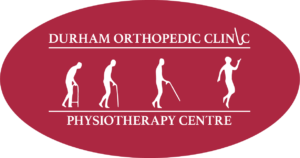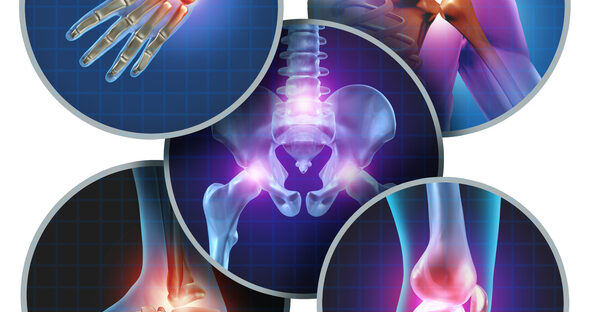As the crisp fall air begins to roll in, many people start to notice a familiar discomfort,increased joint pain and stiffness. While the connection between colder weather and joint pain isn’t fully understood, it’s a common complaint, especially for those with conditions like arthritis or old injuries. The good news is that physiotherapy can play a crucial role in managing these symptoms, helping you stay active and pain-free throughout the cooler months.
Why Does Cold Weather Worsen Joint Pain?
Many people with arthritis, bursitis, or other joint issues report that their symptoms worsen as temperatures drop. There are a few theories as to why this happens:
- Barometric Pressure Changes. Some research suggests that changes in atmospheric pressure, which occur as seasons shift, can cause joints to expand slightly, leading to increased pain and stiffness.
- Reduced Blood Flow. Cold weather may reduce blood flow to muscles and joints, making them stiffer and more prone to discomfort.
- Inactivity. People tend to be less active in colder months, and prolonged inactivity can lead to muscle tightness and joint stiffness, exacerbating pain.
Regardless of the exact cause, it’s clear that many people experience more joint pain during the fall and winter months. Fortunately, physiotherapy can help address and manage these symptoms.
How Physiotherapy Can Help
Physiotherapy provides numerous strategies to relieve joint pain and improve mobility during cooler weather by providing the following.
1. Customized Exercise Programs
Staying active is one of the most important things you can do to manage joint pain, even when the weather is cold. A physiotherapist can design a customized exercise plan that strengthens the muscles around your joints, improving flexibility and reducing stiffness.
- Strengthening Exercises: Strengthening the muscles that support your joints, like the quadriceps around the knees or the muscles around the hips, can reduce strain on your joints and relieve pain.
- Stretching: Regular stretching can improve flexibility, reduce stiffness, and improve your range of motion. This is especially beneficial in the fall when joint mobility may decrease due to decreased activity levels.
- Low-Impact Activities: Swimming, cycling, or using an elliptical machine are great low-impact exercises that keep you active without putting stress on your joints.
2. Manual Therapy
Manual therapy is a hands-on technique used by physiotherapists to mobilize stiff joints and tight muscles. It can help improve blood flow, reduce inflammation, and alleviate joint stiffness that often worsens in colder temperatures. Manual therapy includes;
- Joint Mobilizations: Aimed at reducing pain and increasing range of motion.
- Soft Tissue Massage: This helps relax tight muscles, reducing discomfort around affected joints.
3. Heat Therapy
Applying heat to stiff or sore joints can significantly reduce pain. Many physiotherapists use heat therapy in combination with other treatments, as it helps relax muscles and increases circulation to the joints, which can counteract the stiffness brought on by cooler weather.
- Hot Packs: Applying heat before starting an exercise routine or during treatment can make joints more flexible.
- Warm Water Therapy: Warm water exercises or even simple warm baths can soothe aching joints, providing relief and increasing mobility.
4. Posture and Ergonomics Education
As the weather cools, people often spend more time indoors, which can lead to prolonged sitting or poor posture, worsening joint pain. A physiotherapist can teach you proper posture and ergonomics for your workspace or home environment to avoid unnecessary strain on your joints.
- Correct Sitting Posture: A physiotherapist can advise on how to sit properly to minimize back, hip, and knee pain.
- Workplace Adjustments: If you work from home or in an office, a physiotherapist can suggest ergonomic changes to your chair, desk height, or keyboard placement to reduce strain on your joints.
5. Assistive Devices and Supports
If your joint pain is more severe, especially in the colder months, a physiotherapist can recommend supports or braces to help stabilize your joints, allowing you to stay mobile while reducing the risk of injury.
- Knee Braces: These provide extra support during activities like walking or climbing stairs.
- Orthotics: Custom shoe inserts can help correct foot mechanics, reducing stress on your knees and hips.
Tips for Managing Joint Pain at Home During Cooler Months
While physiotherapy offers effective treatment, there are also steps you can take at home to help manage joint pain in cold weather:
- Stay Warm: Dress in layers and keep your joints warm, especially when exercising outdoors. Cold muscles and joints are more prone to stiffness and injury.
- Stay Active: Even though it’s tempting to stay indoors, try to maintain a regular exercise routine. Moving your joints is essential for keeping them healthy.
- Hydrate: Dehydration can worsen joint pain, so make sure to drink plenty of water, even during the cooler months.
- Use Heat Therapy at Home: Invest in a heating pad or take warm baths to relieve stiff joints.
Cold weather doesn’t have to mean increased joint pain. With the help of physiotherapy, you can manage and reduce your symptoms, staying active and comfortable all season long. Whether through strengthening exercises, manual therapy, or heat treatments, a physiotherapist can guide you through the best ways to combat the effects of the cooler weather on your joints.
If joint pain is affecting your daily life, contact the professionals at the Durham Orthopedic & Sports Injury Clinic and start your road to recovery today!


